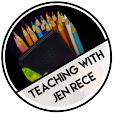Welcome to another installment of my "Teacher Tips" posts :) Each week I will write up quick tips that I think will benefit new and experienced teachers alike. I love collaborating, so if there is something you would like to add to this list, please leave me a comment in the comments field below and I will add your tips with credit to you. Today's topic is on bullying.
Is it bullying?
If you have noticed a trend in parents' contacting you about "bullying" at school, you are not alone. But when is it actually bullying, and when it is just a kid being rude, mean or otherwise inappropriate?
Not everything is bullying
As teachers we are hyper-sensitive to our students' needs and behaviours. We see them excel, see them struggle, see them make friendships and see them get hurt. But not every negative social peer action is bullying, In fact, "true bullying" in schools happens much less than one would think.
What ISN'T bullying
Being RUDE is not in itself bullying. Even though socially unacceptable and sometimes upsetting, being rude isn't bullying. Usually a one-time comment or action rubs people the wrong way and can hurt someone's feelings. The offender is unintentionally hurtful with his or her words or actions. However, being rude isn't bullying.
Being MEAN is not in itself bullying. Everyone gets into a bad mood from time to time. Some of those times people say or do mean things. While not repetitive, the offender is intentionally mean to be hurtful or get a reaction out of someone. Being mean is not bullying.
What IS bullying
BULLYING is aggressive behaviour (socially, physically or emotionally) where the balance of power is NOT equal (big kid vs small kid, older kid vs younger kid, popular student vs unpopular student, etc). Unlike being rude or mean, bullying involves the use of inappropriate actions and words that are intentional and happen more than once. A bully does not stop his or her behaviour when it is evident the target (victim) is upset or asking him or her to stop.
What IS bullying
BULLYING is aggressive behaviour (socially, physically or emotionally) where the balance of power is NOT equal (big kid vs small kid, older kid vs younger kid, popular student vs unpopular student, etc). Unlike being rude or mean, bullying involves the use of inappropriate actions and words that are intentional and happen more than once. A bully does not stop his or her behaviour when it is evident the target (victim) is upset or asking him or her to stop.
 |
| Photo: amelaxa/Shutterstock |
It's important for us teachers not to lump all inappropriate actions into the term "bullying". Bullying is extremely serious behaviour and requires equally serious consequences and intervention.
Previous Teacher Tips Thursday Posts:
1. Teacher Tips Thursday (Child Behaviour Guidance)
2. Teacher Tips Thursday (Technology in the Classroom)
1. Teacher Tips Thursday (Child Behaviour Guidance)
2. Teacher Tips Thursday (Technology in the Classroom)







